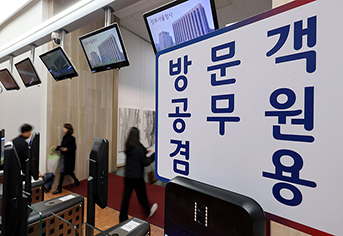문화재청 국립문화재연구소(소장 최종덕)는 한반도 내 가마, 제철, 공방 등 생산유적 관련 조사연구 성과를 집대성한 ?한국고고학전문사전-생산유적편?을 발간하였다.
이 사전은 가마나 제철 공방 등 생산과 관련된 유적의 현황과 개념‧관련 개념들의 용어를 총 정리한 것으로, 2016년부터 표제어 선정과 원고 집필, 감수, 교정, 편집의 과정을 거쳐 최근 작업이 마무리됐다.
개념표제어 342건, 유적표제어 1,513건으로 총 1,855건을 수록하였고, 시간적 범위는 생산유적을 비롯한 유구와 유물이 확인되는 신석기시대에서 근대까지의 전 시기를 다루었다. 본 책자에 수록된 유적표제어는 유구 성격에 따라 토기·기와·자기·도기·제철·목탄 등으로 구분하여 용어해설을 제시하였다. 또한, 관련 연구 성과를 명확하게 파악할 수 있도록 도면, 사진뿐만 아니라 생산유적의 성격별(한글, 한자어, 분야별) 색인 등을 실어 일반인과 연구자들의 이해와 편의를 도왔다.
아울러, 지정문화재 147건에 대해 문화재청 국가문화유산포털(
http://www.heritage.go.kr)에 게시된 QR코드를 삽입해 문화재 정보를 부가적으로 제공하여 해당 유적의 이해를 높이고자 하였다.
국립문화재연구소는 그동안 우리나라 고고학계의 연구 성과를 유적과 유물, 개념 등의 범주로 나누어 용어를 해설하고 자료를 정리한 주제별·시대별 고고학사전을 지속해서 발간해 왔다. 고고학 분야별 국내 전문가들이 참여하여 지금까지 『한국고고학사전(2001)』을 비롯하여 주제별(고분편, 성곽봉수편, 고분유물편), 시대별(구석기시대편, 신석기시대편, 청동기시대편)로 총 7권의 책을 국문판으로 발간한 바 있다.
이번 생산유적 편은 고분편(2009년), 성곽·봉수편(2011년), 고분유물편(2015년)에 이은 네 번째 주제별 사전으로, 우리나라 생산과 관련한 고고학 연구에 더 넓은 이해와 연구 활성화의 토대가 될 것으로 기대한다.
또한, 국문판 외에도『Dictionary of Korean Archaeology(한국고고학전문사전)』와『Dictionary of Korean ArchaeologyThe Paleolithic(한국고고학전문사전-구석기시대편)』영문판 두 권을 발간하여 ‘한국고고학의 세계화’와 학술교류 활성화에 이바지하고 있으며, 우리나라 문화재 조사연구의 성과와 역량을 해외에 적극적으로 홍보하기 위해 노력하고 있다.
『한국고고학전문사전-생산유적편』은 국내·외 국공립 도서관과 국외 연구기관 등 관련 기관에 배포되며, 국립문화재연구소 누리집(
http://www.nrich.go.kr, 문화유산연구지식포털)을 통해서도 누구나 열람할 수 있도록 할 예정이다.
문화재청 국립문화재연구소는 국내 유일의 문화유산을 연구·발굴·보존·복원하는 국가기관으로서 앞으로도 활발한 조사와 연구를 통해 우리 문화재 조사연구 성과를 다양한 자료를 통해 제공할 계획이다.

<『한국고고학전문사전-생산유적편』>
『Dictionary of Korean Archaeology - Production Sites』Published
- Compilation of research achievements of production-related sites such as kilns, steel mills, workshops, etc., National Research Institute of Cultural Heritage -
The National Research Institute of Cultural Heritage of the Cultural Heritage Administration (Choi Jongdeok, Director General) published the 『Dictionary of Korean Archaeology Production Sites』, compiling the research achievements related to production sites like kilns, steel mills, workshops, etc. on the Korean Peninsula.
This dictionary, consisting of research outcomes about the current states, conceptions and terminology of production-related sites, has been completed after a selection of entries, manuscript writing, supervision, proofreading, and editing processes from 2016 to 2019.
1,855 entries including 342 concepts and 1,513 sites are contained, while a broad time span from the Neolithic to the modern era, where sites and features related to production are to be discovered, was applied. The entries in this book provide a glossary that is classified into potteries, roof tiles, porcelains, metal, charcoal, etc. depending on their characteristics. Also to help the public and the researchers clearly apprehend the associated research achievements, not only figures and images but also indexes by various attributes (in Korean, Sino-Korean, by field) are included.
Additional information is available through embeded QR codes from the cultural heritage portal site,
http://www.heritage.go.kr/heri/idx/index.do of the Cultural Heritage Administration for 147 designated cultural heritage sites.
The National Research Institute of Cultural Heritage has been continuously publishing various dictionaries interpreting the terms and organizing information from the research outcomes in Korean archaeology, divided into categories like sites, artefacts, notions, etc.. Experts of various fields have participated to publish seven books consisting of ones divided by topics (Ancient Tombs, Castles and Signal Fires, Burial Goods in the Ancient Korean Graves) and by era (the Paleolithic, the Neolithic, the Bronze Age) alongside the 『Dictionary of Korean Archaeology(2001)』 in Korean.
The Production Sites-issue, the fourth topic dictionary after the Ancient Tombs-issue (2009), the Castles and Signal Fires-issue (2011), and the Burial Goods in the Ancient Korean Graves-issue, is expected to provide a broader understanding and a solid foundation for an active research on Korean archaeology related to production.
Also, the『Dictionary of Korean Archaeology』 and the 『Dictionary of Korean ArchaeologyThe Paleolithic』 published in English will contribute to the globalization of Korean archaeology and active promotion of the achievements and the competence of Korean cultural heritage research.
The『Dictionary of Korean Archaeology Production Sites』 will be distributed to national and international libraries and research institutes, and also will be available to the public through the NRICH website (
www.nrich.go.kr, Cultural Heritage Research Knowledge Portal).
The National Research Institute of Cultural Heritage of the Cultural Administration, as the only state institution that researches, excavates, conserves, and restores cultural heritage, will keep on providing research outcomes through various materials by actively engaging in studies and research on our cultural heritage.
 이 누리집은 대한민국 공식 전자정부 누리집입니다.
이 누리집은 대한민국 공식 전자정부 누리집입니다.























![[전문] 정부 2025년 예산안 시정연설문 (2024년 11월 4일)](https://www.korea.kr/newsWeb/resources/attaches/2024.11/04/d78af517693f8fd252ca0b9c0d2f307f.jpg)




![[전문] 윤석열 대통령, 국민께 드리는 말씀](https://www.korea.kr/newsWeb/resources/attaches/2024.11/07/9cb9da1b11f3db7be804c8e18a080b6e.jpg)




